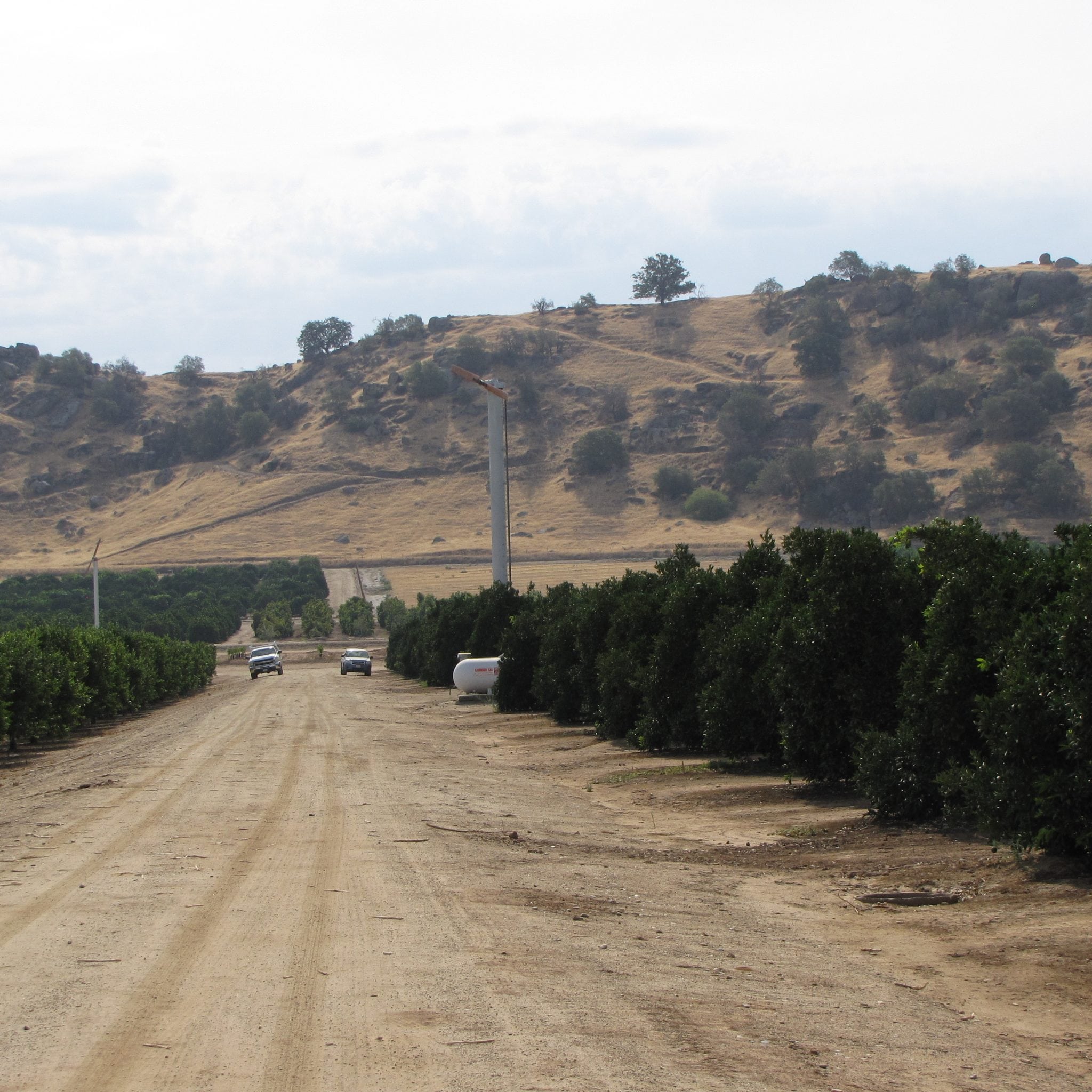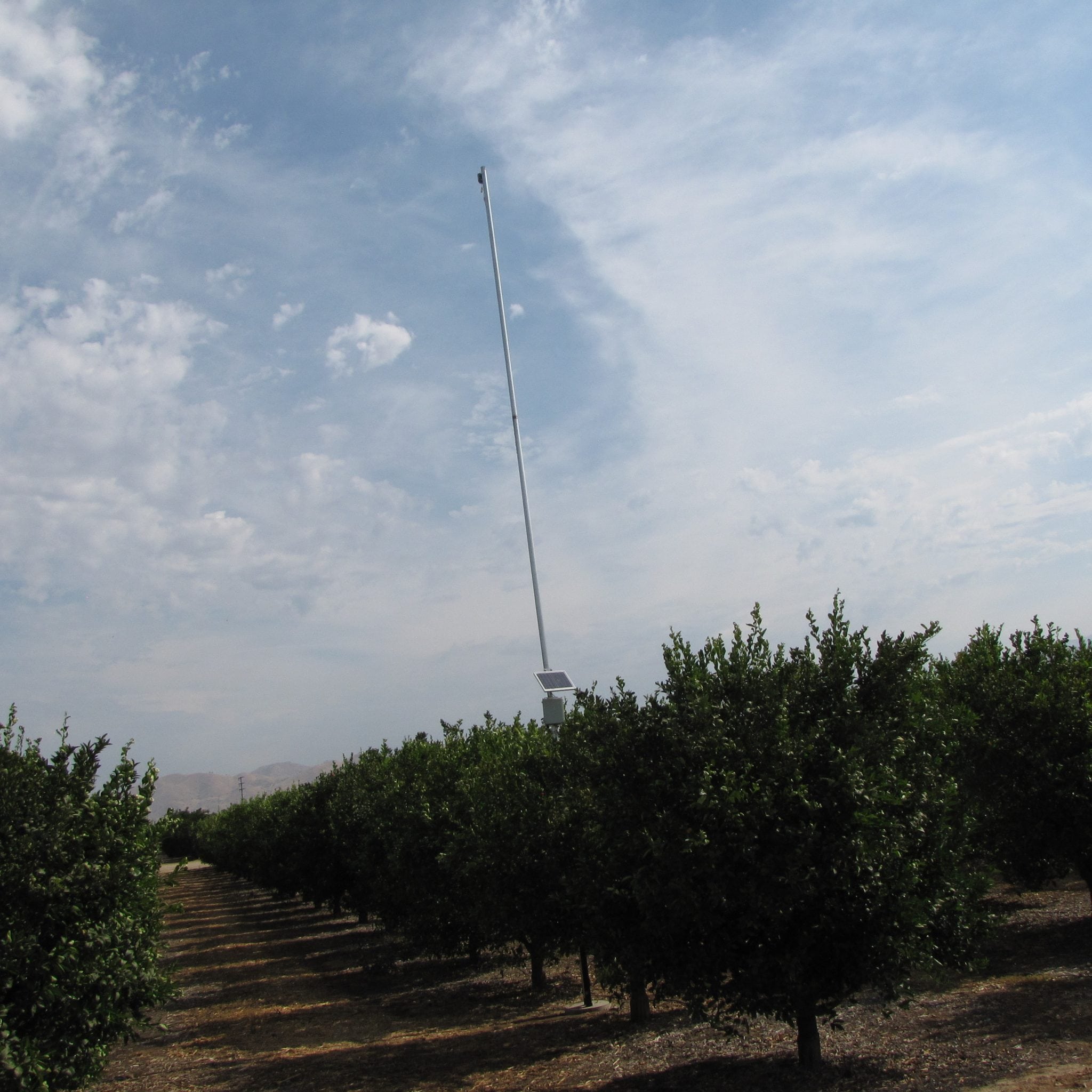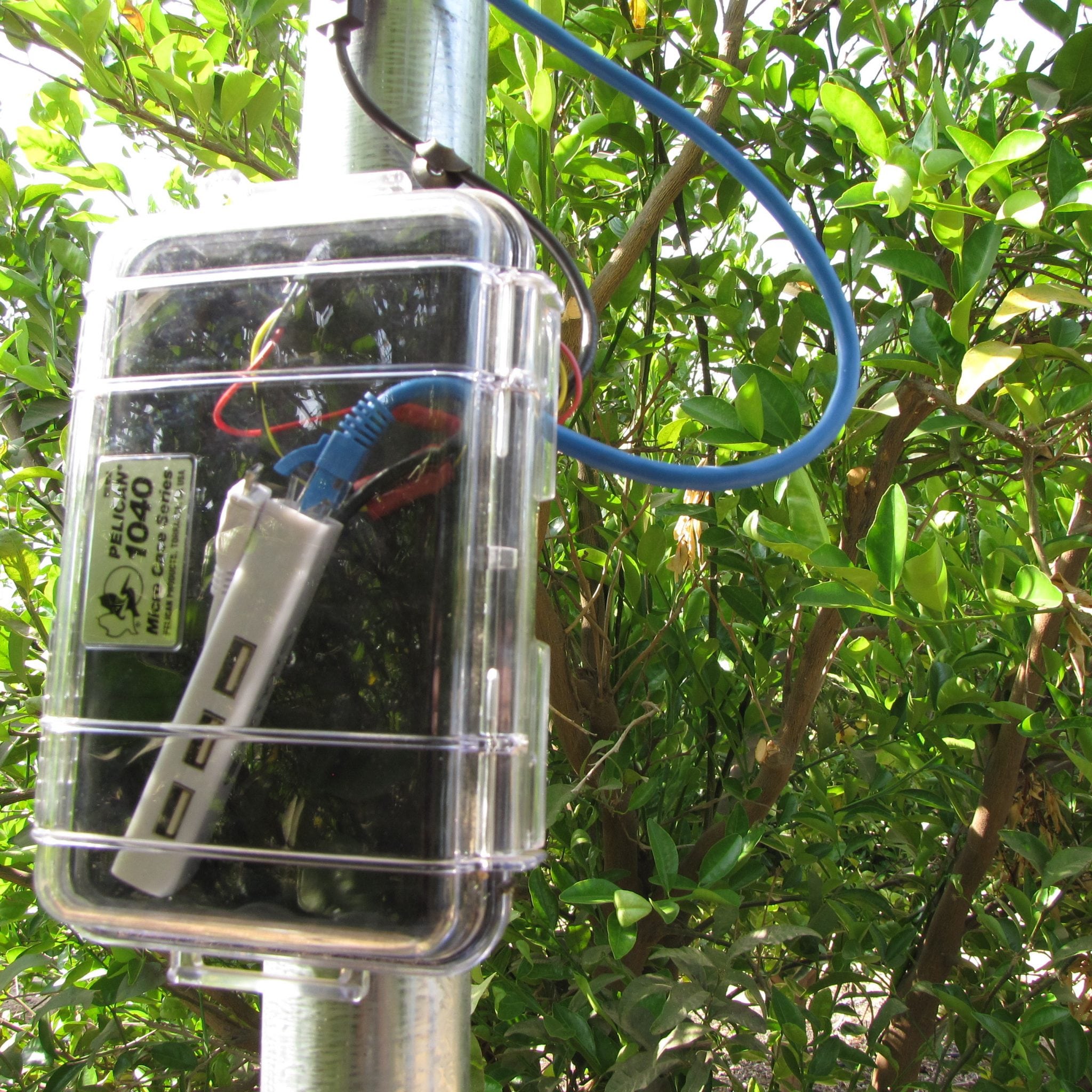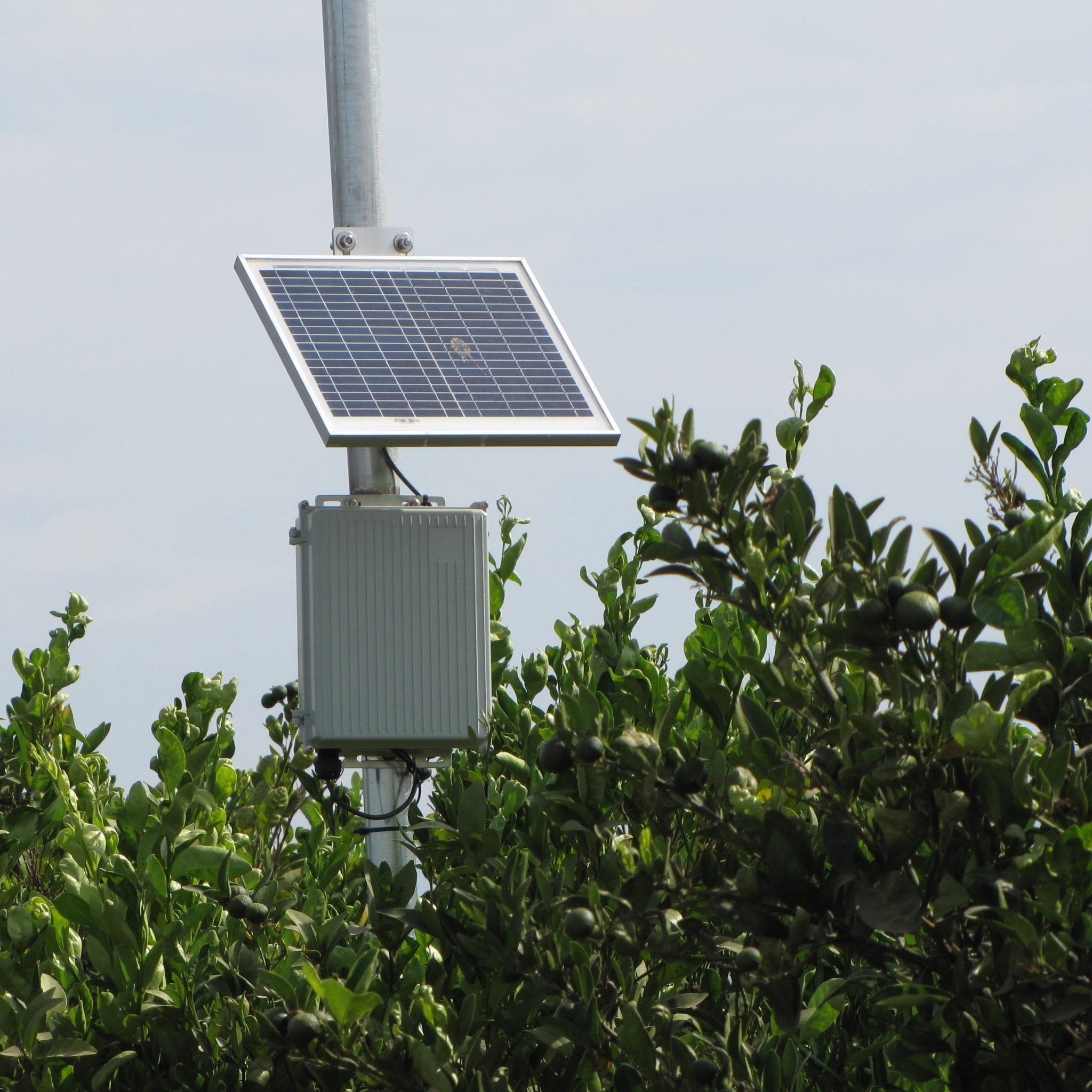Computer scientists from UCSB team up with citrus researchers to make a smart farm system that reports temperatures and may eventually automate the use of wind machines that keep frost off citrus crops.
Computer science researchers from the University of California Santa Barbara are using the internet of things to prove that smart farming can be a farm implement as basic as the tractor and plough.
The husband and wife team of Chandra Krintz and Rich Wolski, both UCSB computer science professors, think data analytics can help tackle some of the tough challenges of modern agriculture. They want to apply the predictive mathematical leaps used in modern internet commerce to predict what people will buy, to agriculture. The pair created the UCSB SmartFarm program in response to what they see as the main issues of agriculture.
Krintz and Wolski cite U.S. Department of Agriculture and United Nations Food and Agriculture Organization studies that say some scary stuff: increasingly more food is needed to feed the growing global population, and yet farm labor is in short supply or too expensive. Eighty percent of the fresh water and 30% of global energy is used to produce food, half of which we waste in spoilage. Farming also has some particularly tough foes: Pests and disease attack farms’ output and farm land is subsiding (sinking) — especially in California — because of groundwater overdraft. On top of all that, agriculture makes 22% of greenhouse gases.
The only way smart farming can make a dent on those issues is to attack specific problems. For Krintz and Wolski’s first test projects, they talked to the farmer — in this case, farm researchers — first before designing a system. Although almost every ag tech pitch begins with a summary of those issues, the UCSB computer scientists’ approach is to come up with scientifically vetted data about the usefulness of cloud and data analytics in farming.
The design parameters of behind UCSB SmartFarm’s Farm Cloud System is to make a system a farmer could love: it should be easy to use and work reliably, cheaply and privately — farmers don’t want their data accessible. The system needs to provide useful data to help increase yield, automate farm operations or save money (or all three), and the data must be available real time. The whole thing has to work without IT staff.
The self-managing system needs to work like an appliance, like your refrigerator, write Krintz and Wolski in a presentation about the project.
Krintz and Wolski are testing the system on nut trees at Fresno State and on citrus at the University of California’s Lindcove Research and Extension Center (LREC) near Visalia, Calif. The UCSB SmartFarm program has support from Google, Huawei, IBM Research, Microsoft Research, the National Science Foundation, National Institutes of Health and the California Energy Commission.
RCR Wireless News visited the LREC — a literal test bed for citrus and smart farming — and got the full tour of the UCSB’s Farm Cloud System.
Lindcove’s research mandate
The public is probably not aware that agricultural research centers, such as LREC (Lindcove), do the hard science that protects our food. In the case of Lindcove, hard science is the study of mostly citrus trees, and it means the grueling work of studying each tree.
Dr. Beth Grafton-Cardwell, research entomologist, an integrated pest management (IPM) specialist and Lindcove’s director remembers sorting fruit by hand.
“When I first started in 1990, if we harvested in January, we would stand in the field in our long underwear and they would pick fruit into a bin and we would have ring sizers that told us what size the fruit was. We would count the fruit and size the fruit and write it on a clip board on a piece of paper,” she said. “Now this machine can do this better.”
Standing near a huge packing line machine that dwarfed her, Grafton-Cardwell explained how the cameras and the extra sensors enable the machine to size and weigh the fruit, examine the outside of the fruit using three types of cameras and estimate the sugar levels inside. One piece of fruit goes through the machine at a time, for scientific purposes, which differs from how a normal packing house operates.
“If I am a researcher, each of my trees is a replication and a different situation, so I want to know everything there is to know about the fruit on that tree,” said Grafton-Cardwell. The cameras take about 30 photographs of each piece of fruit, rotating the fruit as they go. Every parameter from each piece of fruit is put into a spreadsheet: “We know the size, the shape, if it has scarring, the precise color,” said Grafton-Cardwell.
The growers paid for Lindcove’s packing line. “We can simulate anything you want to do on a commercial pack line,” said Grafton-Cardwell. Most packing houses have these machines but don’t use them the way researchers do. They use them for sorting fruit, not for collecting the precise data the researchers need.
“You have to train the machine to the colors and the blemishes. It can get overwhelming,” said Kurt Schmidt, Lindcove’s principal superintendent of agriculture. “We can slow everything down and gather an infinite amount of data.”
“The data sets are ginormous,” Grafton-Cardwell pointed out. Data and an interpretation of the data is the really the product that Lindcove produces.

Originally started in 1959 by University of California Riverside and San Joaquin Valley citrus growers, Lindcove helps growers try out treatments and crop varieties without experimenting on their own crops, which protects their orchards — and livelihood. “Researchers from around the state can come here and do experiments,” said Grafton-Cardwell. Lindcove focuses on creating new varietals and demonstrating gardens of hundreds of citrus — a demo garden that is repeated in several other locations, such as the desert, for comparison. The center is working on 30 research projects right now.
“Citrus grows quite easily statewide….there are 300,000 acres [planted] statewide. It’s all fresh market, [California growers] don’t do juice. If the growers produce for juice, they lose money,” said Grafton-Cardwell. Florida and Brazil are the juice producers.
“Their climate produces a better juice fruit,” said Schmidt.
Lindcove is one of nine research centers in the University of California’s Agriculture and Natural Resources (ANR) department. With soil and climate typical for the commercial citrus growing in the Central Valley of California, the Lindcove’s 175 idyllic acres may be tucked remotely against the Sierra foothills on the road to Sequoia National Park, but it’s on the forefront of fighting some pretty scary citrus pests.
The Huanglongbing (HLB) bacterium has the citrus industry in California in an increasing panic. This bacterium, spread by the Asian citrus psyllids, a small bug imported from Asia, has already made its way up through Mexico and is now in Southern California and spreading northward.
Huanglongbing, also known as citrus greening disease, is killing trees at alarming rates and there is no cure yet. “It has devastated Florida. Huanglongbing has knocked their acreage down by 50 percent,” said Grafton-Cardwell. “We are trying to get some proactive research going to prepare for the arrival of the disease in the commercial citrus. Right now it is just in residential backyards, but it is going to get to the commercial citrus in the near future,” said Grafton-Cardwell.
In California, it is particularly hard to control because of the prevalence of backyard citrus trees.
“Right now it is just in Southern California. We are up to about 650 trees in Southern California that tested positive,” said Grafton-Cardwell. All of those infected trees were in residential yards. Therein lies the problem: An estimated 60% of homeowners have a citrus tree in their yard. “That’s like 15 million citrus trees. How do you manage a disease when you’ve got 30 million commercial trees and 15 million residential trees? It is very difficult,” she said. “Homeowners don’t understand plant disease, they don’t understand how to manage the pest, they don’t understand the risk.”


Unrelated to HLB, but nonetheless an insurance policy for all citrus growers, is Lindcove’s Citrus Clonal Protection Program (CCPP) out of UCR. Lindcove preserves and archives original budwood of citrus varieties as part of CCPP. Large screenhouses — greenhouses with screens instead of glass — hold clean budwood, which nurseries, growers and even citrus enthusiasts can use to propagate citrus plants. The citrus buds are grafted to rootstock and grown into trees in the screenhouses, where they are protected from insects.
The screens on these structures are “rated for thrips” — so fine that thrips or psyllids can’t get through it. Recently when one of the screens had a breach, the CCPP program restarted all the trees in the screenhouse to make sure they were free of insects and disease. This is serious business.
First, the network
Lindcove has a new network capability now. “We are really excited,” said Dr. Grafton-Cardwell. “It has taken us ten years to get to the point where we have a network that can support all this, because we are out in the boonies.”
Lindcove now uses the fiber network from CENIC — the non-profit network operator for the California universities, colleges, schools and libraries — and fixed wireless company GeoLinks for last-mile wireless.
“We were getting our internet from a local provider here in Visalia with limited bandwidth for a lot of money,” said Schmidt. “So now we’ve got this big connection that has the potential to have a large bandwidth. We’re in pretty good shape.”
“ANR pushed really hard in the last couple years to develop the funding to do this for all the research and extension centers, all nine of them, because we were all created back in the 1950s, and most of us in the boonies, and none of us had decent network capability. For scientists in this day and age to do research, it is totally revolutionary,” said Grafton-Cardwell. “When I first came in 1990, we weren’t able to do any of this stuff. Computing was really primitive and now it is going to improve what we do.”

Smart farm at Lindcove
“I didn’t even know what the internet of things was before Rich Wolski explained it,” said Grafton-Cardwell, but now she can’t wait to get it.
The goal of the UCSB’s smart farm test at Lindcove is to improve the decision making for frost protection for citrus growers, which should help reduce costs and carbon footprint.
Schmidt pointed out the culprit: the big wind machines on citrus farms. These wind machines are needed because the typical inversion layer of warmer air holds cold air to the ground, which damages fruit. The wind machines circulate the air when frost is imminent. It costs a lot to run the wind machines, which run on propane. That’s not even counting the cost of having to run around to the fields in a truck, taking temperature readings at all hours to make a decision when to turn on the wind machines.

Krintz and Wolski’s team of students have installed low-cost, sturdy weather stations that can withstand the elements and accurately sense temperature and humidity at 5 feet and 30 feet from the ground. The stations are installed to be able to monitor 3 feet from the boundaries of where the wind machines cover. The poles also have surveillance cameras with infrared capability to allow more temperature measurement, beyond regular thermometers. A network station in the field moves the data to the office on-site. Drones could be used “on the fly” to monitor at different levels.
Measuring and estimating the evaporation and transpiration under the tree canopy and sending that data to the office means that someone like Kurt Schmidt won’t have to manually take the temperature every hour at all hours, to determine when to turn on the fans. Also, tapping into Schmidt’s knowledge of when the fans need to be turned on will help inform the system; Krintz and Wolski can write software to automate the fans operations. Having more detailed information in real time means saving fuel if one windfan on one end of a microclimate doesn’t need to be turned on, even though others may need to run.
This frost experiment is only the beginning.
“We have a laboratory here that has equipment in it that again, we could be connecting,” said Grafton-Cardwell. “One of the things I proposed to Chandra [Krintz] and Rich [Wolski], is we have all these data in separate units. The pack line generates data, …we are collecting data from the field. That is going into files. The data aren’t connected in any shape or form.”
Grafton-Cardwell’s ultimate goal is to have a researcher go into a portal and view all the data associated with their research.






